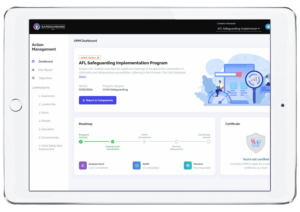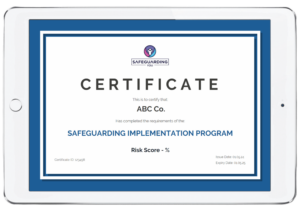Protect Children & Young People.
Build Trust With Families.
Because child safety doesn't just happen.
Victorian Child Safe Standards Program
Thousands of organisations in Victoria need to comply with the new Child Safe Standards, but many don’t know where to start.
The Child Safe Standards are a new set of minimum requirements that outline the actions organisations must take to keep children and young people safe. They provide more clarity for organisations and are more consistent with Standards in the rest of Australia.
Safeguarding You’s Victorian Child Safe Standards Program (VCSS) allows businesses and non-profits, particularly those in sports, arts, recreation, disability, education and child care environments to measure themselves against this new standard, remediate weaknesses and report to relevant stakeholders.
Let's Make Safeguarding Easy
For Businesses
Large & Small
A scalable platform that caters to your specific needs, managed in your own time at a price that shocks.
Safeguarding in
One Platform
Smart assessments, powerful recommendations, curated resources and an incident reporting system.
Empowering Carers
and Volunteers
Helping build trust, support participant outcomes, and creating a culture of care and respect.
How It Works





Programs Include
-
12 Components
-
Smart Self Assessment
-
Risk Report: High-Med-Low
-
Digital Library of Resources
-
Action Management Module
-
Incident Management
Program Modules
1. Cultural Safety
2. Child Safety & Wellbeing
3. Empowering Young People
4. Keeping Informed
5. Diversity & Inclusion
6. Working With Children
7. Complaints & Concerns
8. Education & Training
9. Physical & Online Environments
10. Implementation
11. Policies & Procedures
12. Child Employment
Victorian Child Safe Standards Survival Guide
Tailored for Victorian organisations, this guide cuts through the noise to deliver actionable strategies in Child Safeguarding.
More than just advice – it’s a blueprint for success. Avoid pitfalls, make smart decisions, and drive your organisation towards safer standards and sustainable growth. Don’t miss out on this opportunity to turn information into power.
VCSS Survival Guide




